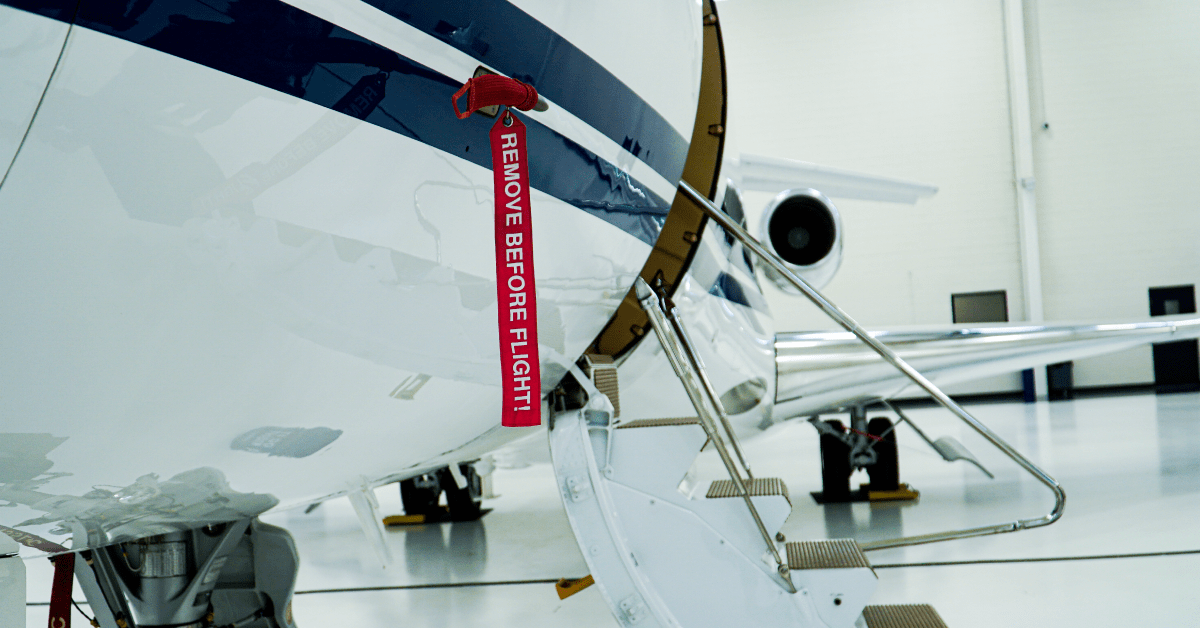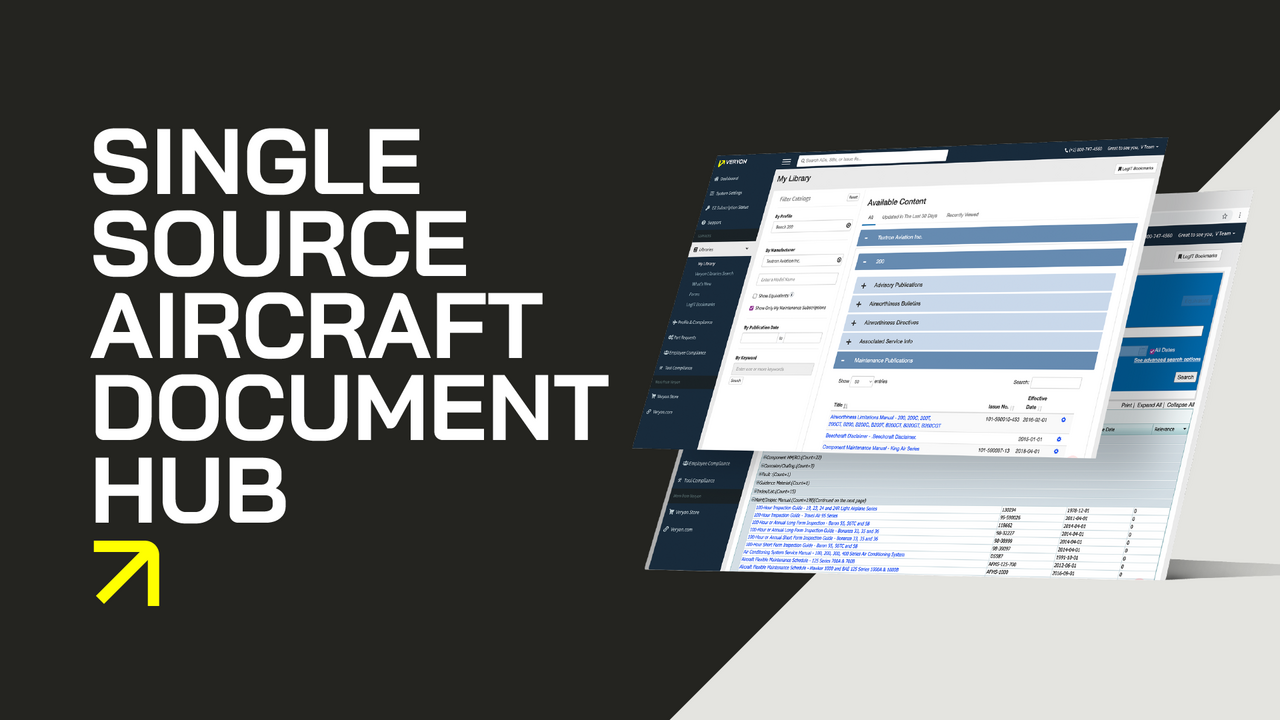4 min read
Top 5 Things to Look for in a Maintenance Tracking Solution
Veryon Jan 5, 2023 8:00:00 AM

As we know, it’s all kinds of fun planning for that next major maintenance event. The process becomes even more interesting when managing a fleet. Not only are you tasked with the day-to-day logistics of keeping your fleet airworthy, but you need to be able to think months in advance to plan for those large events.
Are you going to do it in-house? Are you going to comply with optional service bulletins or do any major mods? Are engines due for an overhaul or MPI? What’s your budget? What kind of downtime do you have to work with?
There is a never-ending list of considerations. Throw into the mix juggling several projects and the possibility of being short-staffed and you can be left worrying about what you missed or didn’t consider.
But it doesn’t have to be that way if you plan early, budget accordingly, account for squawks, and rely on electronic tools to mitigate errors, eliminate redundant paperwork, reduce labor costs, and provide transparency across applications.
Let’s take a look at some of the top considerations you should make when evaluating an electronic tool for managing your maintenance – ultimately saving you time and getting more uptime.
Qualities of a great maintenance tracking solution
1. Cost
You are often on a tight budget, and if you’re going to allocate a large piece of it for maintenance tracking, you need to show the value and ROI. If you can’t, you’ll be forced to find a cheaper alternative – and likely, this system won’t have all the functionality you will need to run a smooth operation and maximize aircraft uptime.
It’s not so much the cost of the system we are talking about here, but how much money you can save by getting more aircraft uptime. Of course, having a system that is both lower cost and better functionality exists, but it must also get you more uptime to be worth it. Inefficiencies are costing you much more than you think.
The cost of downtime can destroy your profitability. Your aircraft is on the ground, your maintenance crew is waiting for the part, your to-do list is waiting while you finish paperwork, and the passengers, customers, and your boss are all waiting for an explanation. This is costing you time and money that you don’t have.
Your maintenance tracking system needs to maximize aircraft uptime and utilization. This points to the real ROI of your organization.
2. Ease of use
If your paperwork is keeping you from getting home when the workday is done, your system is not doing you any favors. Your system needs to be as easy to use and learn as it is to walk and talk. The less time it takes you to do your paperwork, the better. When all you have to do is click send at the end of the day and all your paperwork is submitted, that’s your system working for you.
Another way to know your system is easy to use is when you don’t have to dig, drill, or ask any questions on your fleet status because all the information is made available to you in real time. If all your data is outlined in a neat and stress-free format, you will be able to complete your day’s work quickly and efficiently.
Your system should enable you to view all your data at a glance, easily remember how to perform tasks, and get your paperwork done in mere minutes as opposed to hours. This all has to do with how easy the system makes your job for you.
3. Modern and innovative features
You need a maintenance platform that is in tune with the constantly changing industry and is continually looking to incorporate new technology.
You are most likely interested in finding a system that can track AD/SBs, track parts, report on non-routines, perform reliability reporting, and have a mobile application accompanying a web application.
With the transformation of technology, mobile applications are the most modern and efficient means to maintain aircraft. Having a system built on native mobile applications enables you to have the most modern system that better performs, as well as being more secure, interactive, and intuitive.
Not only do you want modern and innovative features, but you also want integration abilities where you can access your data across multiple platforms/devices. Staying connected with your maintenance, flight operations, and inventory all in one place can save you time across the whole operation. Your system should provide you with everything you need right at your fingertips, so you are not left waiting.
Your system should be current with the times, have a mobile application, and enable you to have a fully integrated flight department.
4. Dedicated support when you need it
A lot of times, people do not consider the support from the vendor when evaluating a maintenance tracking system. If your operation is mission-critical and you run into an issue and need someone on the phone immediately, you need to find a vendor that can provide 24/7/365 support.
You don’t want to rely on one person to get assistance when you need it, you need a team of dedicated customer support people to get you up and running when you need it. Your schedule is 24/7, so why should the support you receive be any different? Support needs to be 24/7/365 because you are operational 24/7/365.
This sounds obvious, but you need a support team that knows and understands the system they work with. A common theme in this industry is having an “analyst” that can’t understand their own system. How are they going to help you if they don’t even know their own system? This is a clear sign that the support will not be adequate for your operation.
Make sure you find a system that offers a dedicated team of around-the-clock support, and who are masters of their own system.
5. Industry Presence and reputation
This is another category that is often bypassed when evaluating a maintenance tracking system. It is important to know what else your vendor is involved in within the industry, how well-known they are, and what peers are saying about them.
Word of mouth is everything. Do your peers speak positively about this system? What has their experience been like? What do they like or dislike? All these questions must be addressed before committing to a system.
Having a vendor that participates through multiple sectors of the aviation industry is always a good sign. This means they are well-established in the industry and are on top of current trends and customer needs. Having confidence in your vendor is always super important.
Summary
At the end of the day, your data is a tool, and you need to make it work for you. Gone are the days where you need to spend several hours a day maintaining your own data. Evaluating a system that works for you can be challenging, but we’re here to you identify some of the main things to look for when evaluating a maintenance tracking system.
Your maintenance system should get you more uptime, be easy to use, have modern and innovative features, provide support when and where you need it, and have a positive presence among your peers and the aviation industry at large.
Options are out there, and you owe it to yourself to explore them all. Take a day off occasionally. Sleep well at night knowing you’re confident in the systems you have selected to help your organization in its mission of providing safe, reliable aircraft on time, every time.
Streamline your aircraft maintenance and compliance with our maintenance tracking software that automates workflows, scales reporting, and advances mobile access. Book your demo today to see it in action!



